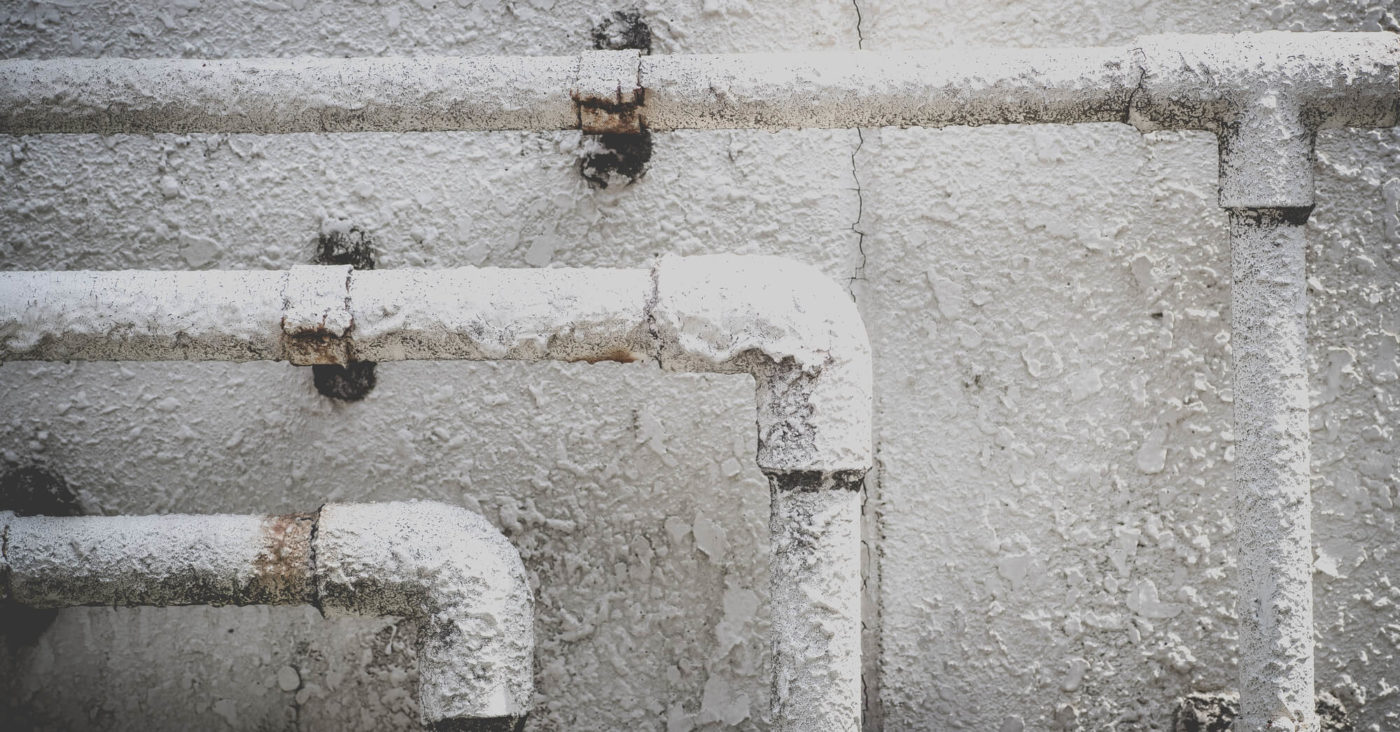For centuries, people around the world have cautioned the use of lead-based materials in construction and manufacturing. By the end of the 19th century, health officials warned about the grave risks of lead exposure, yet, its use prevailed in the United States through the better part of the 20th century. It wasn’t until 1978 that the substance was banned for use in new construction by the U.S. government.
Although America eventually introduced lead regulating legislation, there are still millions of homes and commercial structures standing across the country made with contaminated materials. Homeowners and residents of buildings built before 1978 are at risk of lead exposure, especially if any renovations or repairs disturb the existing lead-based materials.
Understand the risks of renovating any existing buildings that contain lead paint or materials before beginning any construction. Consulting with a certified lead-paint inspector or home renovation specialist is the safest way to protect from possible lead exposure or, worse, poisoning.
How Do You Get Lead Poisoning?
These days, there are very few products made with lead-based paint or materials in the United States. However, residents of older structures could potentially be exposed to lead and be at risk for lead poisoning. Lead is typically absorbed:
- Orally
- Topically
- Through inhalation
Young children are at exceptionally high risk for lead poisoning if they’re prone to putting foreign objects in contact with their skin or mouth. If you’re exposed to older construction or materials and potentially lead-laced items, it’s crucial to keep an eye out for symptoms of lead poisoning.
Symptoms of Lead Poisoning
If you are concerned that your family or you has been exposed to lead-based material, look for lead poisoning signs and symptoms. These symptoms can be severe and lead to potentially life-altering ailments, or even death. Common symptoms include:
- Fatigue
- Nausea and vomiting
- Seizures
- Headaches
- Memory issues
- Unusual and severe mood swings
- High blood pressure
- Developmental delays
When these symptoms are ignored, there is a serious chance of severely damaging illness that can ultimately cause death in a person.

Most Common Sources of Lead Exposure
When pressed for a primary source of lead exposure in homes and businesses, most minds will go straight to paint. While this is especially true for houses, there are other ways to expose yourself to the dangerous substance.
Water and Pipes
Lead exposure and poisoning are hazardous for residents of older cities with outdated water lines. One of the most common sources of lead exposure is through water. Many towns, cities, and other municipalities don’t realize that modern chemicals used to sanitize water sources often corrode older pipes. The pipes in question are usually soldered together with lead, which breaks down when it comes in contact with certain substances.
Lead-contaminated water easily comes into contact with people orally, topically, and through inhalation. It’s critical that contractors and community members avoid water sources that are possibly contaminated with lead.
Paint
Paint is probably the most prevalent source of lead exposure in homes and buildings. Unsupervised children sometimes succumb to lead poisoning by eating contaminated paint chips in older homes. Lead also easily impacts lungs when paint dust is inhaled during construction or a renovation.
Old Toys
Babies, toddlers, and young children are well known for grabbing just about anything and sticking it into their mouths. It’s important to keep an eye on curious kids if you have any older toys left in your house. Paint on toys made before 1978 could easily have been manufactured with lead particles, so it’s best to leave your childhood relics up on the shelf for viewing, not playing.
Air
Another common route for lead exposure is through the air via inhalation. Although strict regulations were imparted on businesses in the United States by the Environmental Protection Agency (EPA), most lead air contamination is due to industrial fumes and pollution.
Occupational Exposure
One of the most significant sources of lead exposure in adults is through occupational hazards. Construction and factory workers in industrial settings often work with or manipulate materials contaminated with lead.
Federal law requires contractors like roofers, electricians, plumbers, and renovation workers to undergo specialized training and certification to work in high-risk areas where lead exposure potential is high.
Less Common Sources of Lead Exposure
While pipes and paint are going to be your main priority during an upcoming repair or renovation, there are still a few other ways to expose yourself to lead. Some of the less common areas where lead contamination is present include:
- Some foods
- Dishware
- Candy
- Cosmetic products
- Crafting materials
- Ammunition
- Soil
- Meat
- Pottery
- Art
- Shoes and clothing
- Artificial Christmas trees
- Playground equipment
- Traditional medicine
Although the risk for lead exposure is much higher in water and paints, be aware of these unexpected items and areas with the potential for contamination.
What To Look for in Older Homes
A staggering percentage of homes across the United States contain lead-based paint in the original structures. According to the EPA, millions of homeowners and their families are exposed to the dangerous substance each year, sometimes leading to lead poisoning’s devastating outcomes.
| Year Built | Percentage of Homes Containing Lead Paint |
| Before 1940 | 87% |
| Between 1940-1959 | 69% |
| Between 1960-1977 | 24% |
The United States federal government didn’t implement legislation banning lead and limiting lead contamination until the late 70s. For owners of buildings built before 1978, there are many places throughout your home possibly containing traces of lead or lead paint. In older homes, lead is often found in:
- Banisters
- Hand railings
- Doors and door frames
- Windowsills and frames
- Staircases
- Porches and decks
- Trim
Another area of concern in older buildings isn’t actually a tangible structure. The dust found around your home from flaking lead-based paints can be incredibly harmful when inhaled. Any remodeling or renovation can easily disturb this dangerous dust, so it’s essential to make your home lead-safe before beginning any home improvement projects.

How to Make Your Home Lead Safe
Before embarking on any new home remodeling venture, there are a few precautions homeowners and contractors need to take to ensure the property impacted by lead contamination is safe for renovation.
Lead Paint Inspection
The best place to start before beginning construction in a lead-contaminated home or commercial building is a lead paint inspection. The EPA requires contractors to receive certification before completing any residential or commercial inspections.
What Happens During a Lead Paint Inspection?
You may feel inclined to cut corners and DIY a home lead inspection yourself or rely on your handy next-door neighbor to take a look for budgetary reasons. However, it’s much more effective to hire a certified professional to ensure that safe practices are implemented during upcoming construction.
There is nothing particularly exciting or complicated about lead paint inspections. During a lead paint inspection, the inspector simply examines the home’s interior and exterior areas to identify problem areas and locations of high lead concentrations.
Lead Risk Assessment
Although lead risk assessments are similar to inspections, there is one primary difference between the two processes. During an assessment, the certified professional will seek out significant lead contamination levels and assess the severity of the situation. Then, the assessor seeks to inform residents about the potential dangers of exposure and recommend actions for the homeowner to secure the safety of the structure.
Lead Abatement
When an assessor determines that the residence or building is uninhabitable due to extreme levels of lead, abatement is necessary. Lead abatement is the complete removal and permanent elimination of the dangerous substance from structures like homes and businesses. Multiple activities fall under the category of lead abatement, including:
- Lead risk assessments
- Lead-based paint inspections
- Lead-based paint and material removal
Like other lead-based construction efforts, the EPA requires a certification for all individuals partaking in lead abatement activities.
Renovation, Repair, and Painting (RRP)
If you are considering some simple additions or aesthetic alterations to your home’s interior, renovation, repair, and painting, better known as RRP, might be the right option for you. RRP refers to any tasks that may disturb lead-based paint or materials during the construction process. During RRP, at least one supervisor must be trained and certified as a lead renovator.
It’s important to note that RRP does not equate to abatement. Even though RRP does require training, certification, and essential safety protocol, it is not a complete removal of materials or structures containing lead. Instead, it’s simply some safety regulations imparted by the EPA to minimize risks and contamination from lead disturbance during construction efforts. These regulations are much less strict than abatement regulations. Homeowners utilizing RRP cannot claim the affected area as a “lead-free space” since lead is not completely and permanently removed.
RRP or Abatement: What’s Best for Me?
There are significant differences between lead abatement and RRP. Each task requires specific, federally regulated certifications, but lead abatement regulations are much more stringent since it’s the complete and permanent removal of a toxic substance.
If your home renovation project is for aesthetic purposes, RRP is probably the most appropriate course of action to take. If a lead risk assessment has determined dangerous levels of lead in your household, abatement is the best way to ensure the health and safety of residents is not jeopardized.
Working With a Lead-Certified Contractor
Home renovations and other construction efforts are significant efforts that require careful planning and strong safety measures. It’s always essential to work with a safety-conscious contractor, but it’s especially necessary to find a lead-certified contractor if your home was built before 1978.
Who Needs a Lead Certification?
Since the implementation of the Renovation, Repair, and Painting Regulations by the EPA in 2010, construction contractors completing work on lead-contaminated structures must attain certification. At least one supervisor on any RRP project must be a certified lead renovator. Still, it’s advantageous for all contractors to utilize training to prevent lead contamination on construction sites.
There is a wide range of contractors who need lead certifications and training to perform certain tasks from plumbers to roofers to floor renovators. Federal law requires certification for the following lead-related tasks:
- Lead risk assessment
- Lead inspection
- Lead renovation
- Lead dust sampling
- Lead abatement
If you have even the slightest concern that your home is contaminated with lead paint or other materials, consult a certified lead inspector and assessor before beginning work on the affected area. When construction does eventually start, always have a certified lead renovator on hand to ensure safety precautions are being followed.
Conclusion
Dangerous levels of lead can be found in some of the most mundane household items, from toys to the trim around doors and windows. If you’re considering a home renovation or construction project on your commercial property built before 1978, there is an extremely high likelihood that lead is present in the paint or pipes.
Before embarking on your next project, consult with a trained and certified lead renovation expert to ensure that safety protocol is put in place before drilling, demolishing, sanding, sawing, or blasting. One simple call to a certified lead specialist can save someone from the severe symptoms of lead poisoning.


